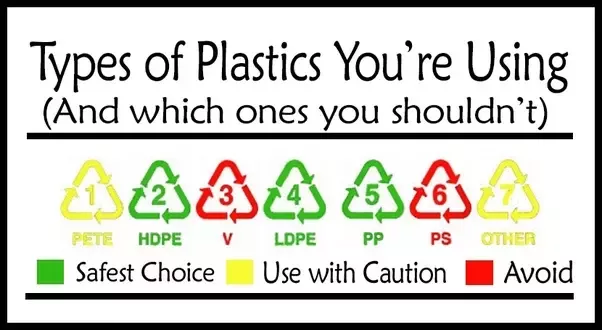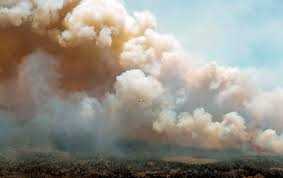
The smell of burnt plastic can be quite unpleasant and alarming, leaving many wondering whether it poses any potential health risks. While the smell itself may not be toxic, the fumes released from burning plastic can contain harmful substances that can have negative effects on your health.
When plastic burns, it releases a combination of toxic chemicals into the air. These chemicals can include benzene, styrene, dioxins, and furans, among others, depending on the type of plastic and the temperature at which it is burned. Exposure to these substances can irritate the respiratory system, eyes, and throat.
Inhaling the fumes from burnt plastic can also lead to more serious health issues. Prolonged exposure to toxic fumes can cause headaches, dizziness, nausea, and even long-term health problems such as respiratory issues, neurological disorders, and certain types of cancer.
It is important to note that the severity of these health risks depends on the concentration and duration of exposure to the fumes, as well as individual sensitivity. If you are regularly exposed to the smell of burnt plastic, it is advisable to take precautions to minimize your exposure, such as opening windows for ventilation or using air purifiers to filter out the harmful chemicals.
In conclusion, while the smell of burnt plastic itself may not be toxic, the fumes it releases can contain harmful chemicals that pose potential health risks. It is crucial to be aware of these risks and take appropriate measures to protect yourself and minimize your exposure.
- Potential Health Risks Associated with Burning Plastic
- Air Pollution
- Toxic Chemical Exposure
- Effects of Inhaling the Smell of Burnt Plastic
- Chemicals Released by Burning Plastic and Their Health Effects
- Short-term and Long-term Health Consequences of Exposure
- How to Protect Yourself from the Smell of Burnt Plastic
- 1. Ventilate the area
- 2. Leave the area
- 3. Avoid unnecessary contact
- 4. Use protective equipment
- 5. Clean and deodorize the area
- Seeking Medical Help for Burnt Plastic Exposure
- Q&A
- Is the smell of burnt plastic harmful to breathe in?
- What chemicals are released when plastic is burned?
- What are the potential health risks of inhaling burnt plastic fumes?
- What should I do if I accidentally inhale burnt plastic fumes?
Potential Health Risks Associated with Burning Plastic

When plastic is burned, it releases a variety of harmful chemicals and toxins into the air. These substances can have immediate and long-term health effects on those who are exposed to them. Here are some of the potential health risks associated with burning plastic:
Air Pollution
Burning plastic releases toxic gases and particles into the air, contributing to air pollution. These pollutants can irritate the respiratory system, leading to coughing, wheezing, and shortness of breath. In the long term, exposure to air pollution from burning plastic can increase the risk of developing respiratory conditions such as asthma and bronchitis.
Toxic Chemical Exposure
Many types of plastics contain chemicals that are known to be toxic, such as PVC, polystyrene, and polyvinyl acetate. When these plastics are burned, they release these toxic chemicals into the air, which can be inhaled or absorbed through the skin. Prolonged exposure to these chemicals can have a range of health effects, including damage to the nervous system, reproductive system, and organs.
| Chemical | Health Effects |
|---|---|
| Dioxins | Carcinogenic, immune system disorders, reproductive and developmental problems. |
| Furans | Carcinogenic, liver damage, respiratory problems. |
| Volatile Organic Compounds (VOCs) | Irritation of the eyes, nose, and throat, headache, nausea, damage to the liver, kidney, and central nervous system. |
It is important to note that the health risks associated with burning plastic can vary depending on the specific type of plastic being burned and the conditions in which it is burned. However, in general, it is best to avoid burning plastic and to properly dispose of it through recycling or other sustainable methods to minimize the potential health risks.
Effects of Inhaling the Smell of Burnt Plastic
Inhaling the smell of burnt plastic can have various negative effects on your health. The chemicals released from burning plastic can be toxic and harmful to both the respiratory system and overall well-being.
Here are some potential health risks associated with inhaling the smell of burnt plastic:
| Health Risk | Description |
|---|---|
| Irritation of the respiratory system | The smell of burnt plastic can cause irritation in the nose, throat, and lungs. It can lead to symptoms such as coughing, wheezing, and shortness of breath. |
| Toxic chemical exposure | When plastic burns, it releases toxic chemicals such as dioxins, furans, and polychlorinated biphenyls (PCBs). Inhaling these chemicals can have long-term health effects, including damage to the immune, reproductive, and nervous systems. They may also increase the risk of certain types of cancer. |
| Headaches and dizziness | The strong smell of burnt plastic can trigger headaches and dizziness, especially in individuals who are more sensitive to odors. |
| Allergic reactions | Some people may be allergic to certain components of burning plastic, which can lead to symptoms such as skin rashes, itching, and swelling. |
| Respiratory infections | Inhaling the smell of burnt plastic can weaken the respiratory system and make individuals more susceptible to respiratory infections, such as bronchitis or pneumonia. |
It is important to avoid inhaling the smell of burnt plastic whenever possible. If you encounter a strong smell of burnt plastic or suspect that a plastic object is burning, it is recommended to leave the area and seek fresh air immediately.
If you experience any symptoms or health issues after inhaling the smell of burnt plastic, it is advisable to consult a healthcare professional for proper evaluation and guidance.
Chemicals Released by Burning Plastic and Their Health Effects
When plastic is burned, it releases a variety of toxic chemicals that pose serious health risks. These chemicals can be inhaled, ingested, or absorbed through the skin, and their effects can range from mild irritation to severe health problems.
Some of the main chemicals released during the burning of plastic include:
- Dioxins: Burning plastic can release dioxins, a group of highly toxic chemicals. Dioxins are known to have harmful effects on the immune system, reproductive system, and can even cause cancer.
- Furans: Similar to dioxins, furans are also highly toxic and can cause a range of health problems. These include liver damage, respiratory issues, and impacts on the central nervous system.
- Volatile Organic Compounds (VOCs): Burning plastic releases VOCs, which are chemicals that can cause respiratory problems, eye and throat irritation, and contribute to the formation of smog.
- Polychlorinated Biphenyls (PCBs): If burnt plastic contains PCBs, it can release these hazardous chemicals. PCBs have been linked to various health issues, including developmental problems in children, liver damage, and reproductive disorders.
- Polybrominated Diphenyl Ethers (PBDEs): PBDEs are flame retardants often found in plastics. When these plastics are burned, PBDEs are released, and they have been linked to hormonal disruption, neurodevelopmental problems, and impaired thyroid function.
Exposure to these chemicals can occur not only when plastic is intentionally burned but also during accidental fires or when plastic products are heated at high temperatures. It is important to avoid exposure to the toxic chemicals released by burning plastic to protect your health and well-being.
Short-term and Long-term Health Consequences of Exposure
Exposure to the smell of burned plastic can lead to various short-term and long-term health consequences.
In the short-term, inhaling the fumes emitted by burning plastic can cause irritation of the eyes, nose, and throat. This can result in symptoms such as watery eyes, nasal congestion, sore throat, coughing, and difficulty breathing. These symptoms are usually temporary and will subside once the exposure to the fumes is removed.
However, long-term exposure to the toxic compounds released during the burning of plastic can have more serious health consequences. The fumes emitted by burning plastic contain a mixture of gases and particulate matter, including carbon monoxide, volatile organic compounds (VOCs), and dioxins. Prolonged exposure to these substances can increase the risk of respiratory problems, cardiovascular diseases, neurological disorders, and even certain types of cancer.
Research has shown that exposure to the fumes of burning plastic can cause damage to the respiratory system. The inhalation of toxic compounds can lead to inflammation and irritation of the airways, which can contribute to the development of chronic respiratory conditions such as asthma, bronchitis, and emphysema.
In addition, the release of dioxins during the burning of plastic is of particular concern. Dioxins are highly toxic chemicals that can accumulate in the body over time. Prolonged exposure to dioxins has been linked to a range of serious health effects, including reproductive and developmental problems, immune system disorders, and an increased risk of certain types of cancer.
It is important to note that the health risks associated with exposure to burnt plastic fumes may vary depending on the specific type of plastic being burned and the conditions under which the burning takes place. Factors such as the temperature of the burning, the duration of exposure, and the ventilation in the area can all impact the level of toxicity of the fumes.
| Short-term Health Consequences | Long-term Health Consequences |
|---|---|
| Irritation of eyes, nose, and throat | Respiratory problems |
| Watery eyes | Cardiovascular diseases |
| Nasal congestion | Neurological disorders |
| Sore throat | Certain types of cancer |
| Coughing | Reproductive and developmental problems |
| Difficulty breathing | Immune system disorders |
To protect yourself from the potential health risks of exposure to burnt plastic fumes, it is important to avoid inhaling the fumes whenever possible. If you encounter the smell of burning plastic, it is recommended to leave the area and seek fresh air. In cases where the smell persists or you experience severe symptoms, it is advisable to seek medical attention.
How to Protect Yourself from the Smell of Burnt Plastic
If you encounter the smell of burnt plastic, it is crucial to take immediate steps to protect yourself from potential health risks. Here are some effective ways to safeguard your well-being:
1. Ventilate the area
Open windows and doors to allow fresh air to circulate and replace the contaminated air. This will help dissipate the smell and reduce your exposure to harmful chemicals.
2. Leave the area

If the smell is strong or causing discomfort, it is advisable to leave the area immediately. Find a safe place with clean air and wait until the smell dissipates or the source of the burnt plastic is resolved.
3. Avoid unnecessary contact
Do not touch or handle any burnt plastic materials. This includes objects, surfaces, or clothing that may have come into contact with the burnt plastic. Minimizing contact can help reduce the risk of exposure to toxic particles or chemicals.
4. Use protective equipment
If you need to clean up the burnt plastic residue or handle any related materials, make sure to wear protective equipment such as gloves, goggles, and a face mask. This will provide an additional layer of protection against inhaling or coming into direct contact with harmful substances.
5. Clean and deodorize the area
After the source of the burnt plastic has been resolved, thoroughly clean and deodorize the area to remove any lingering odor and potential residue. Use mild soap, water, and ventilation during the cleaning process.
It is important to remember that the smell of burnt plastic can indicate the presence of potentially hazardous substances. Taking prompt action and following these protective measures can help minimize any potential health risks associated with this type of odor.
Seeking Medical Help for Burnt Plastic Exposure
If you have been exposed to the smell of burnt plastic and are concerned about potential health risks, seeking medical help is crucial. While the smell of burnt plastic can often be unpleasant, it may also indicate the presence of harmful chemicals in the air.
When you seek medical help for burnt plastic exposure, the doctor will evaluate your symptoms and perform any necessary tests to determine if you have been affected by toxic fumes. They may ask about the duration and intensity of your exposure, as well as any pre-existing health conditions that could increase your risk.
Common symptoms of burnt plastic exposure can include headache, dizziness, nausea, difficulty breathing, and eye irritation. If you experience any of these symptoms, it is important to consult a healthcare professional promptly.
In some cases, immediate medical attention may be required, especially if you are experiencing severe symptoms. You may be advised to go to the emergency room or call emergency services if your symptoms are severe or rapidly worsening.
Seeking medical help is particularly important if you have been exposed to burnt plastic fumes for a prolonged period or if you have been exposed to a significant amount of smoke or fumes. Toxic compounds released from burning plastic can have both short-term and long-term effects on your health.
The doctor may recommend various treatment options depending on your symptoms and the extent of your exposure. This could include providing supportive care to alleviate symptoms, such as administering oxygen or medications to relieve respiratory distress.
Additionally, the doctor may also advise you to avoid further exposure to the smell of burnt plastic and to take steps to improve indoor air quality in your home or workplace. This could involve ventilating the area, using air purifiers, or seeking professional assistance to address any underlying issues.
Remember, the smell of burnt plastic should not be taken lightly, and seeking medical help is essential to ensure your well-being. By seeking prompt medical attention, you can receive appropriate treatment and guidance to minimize any potential health risks associated with burnt plastic exposure.
Q&A
Is the smell of burnt plastic harmful to breathe in?
Yes, the smell of burnt plastic can be harmful to breathe in. When plastic is burned, it releases toxic fumes and chemicals that can irritate the respiratory system and cause health problems.
What chemicals are released when plastic is burned?
When plastic is burned, it releases chemicals such as dioxins, furans, mercury, and polychlorinated biphenyls (PCBs). These chemicals are known to be toxic and can have serious health effects when inhaled.
What are the potential health risks of inhaling burnt plastic fumes?
Inhaling burnt plastic fumes can lead to a range of health problems. It can cause irritation to the eyes, nose, and throat, as well as respiratory issues like coughing, wheezing, and shortness of breath. Prolonged exposure to these fumes can also have more serious effects on the central nervous system and may increase the risk of certain cancers.
What should I do if I accidentally inhale burnt plastic fumes?
If you accidentally inhale burnt plastic fumes, it is important to get fresh air immediately. Move to an area with fresh air and ventilate the space if possible. If you experience any symptoms like difficulty breathing, dizziness, or chest pain, seek medical attention right away.